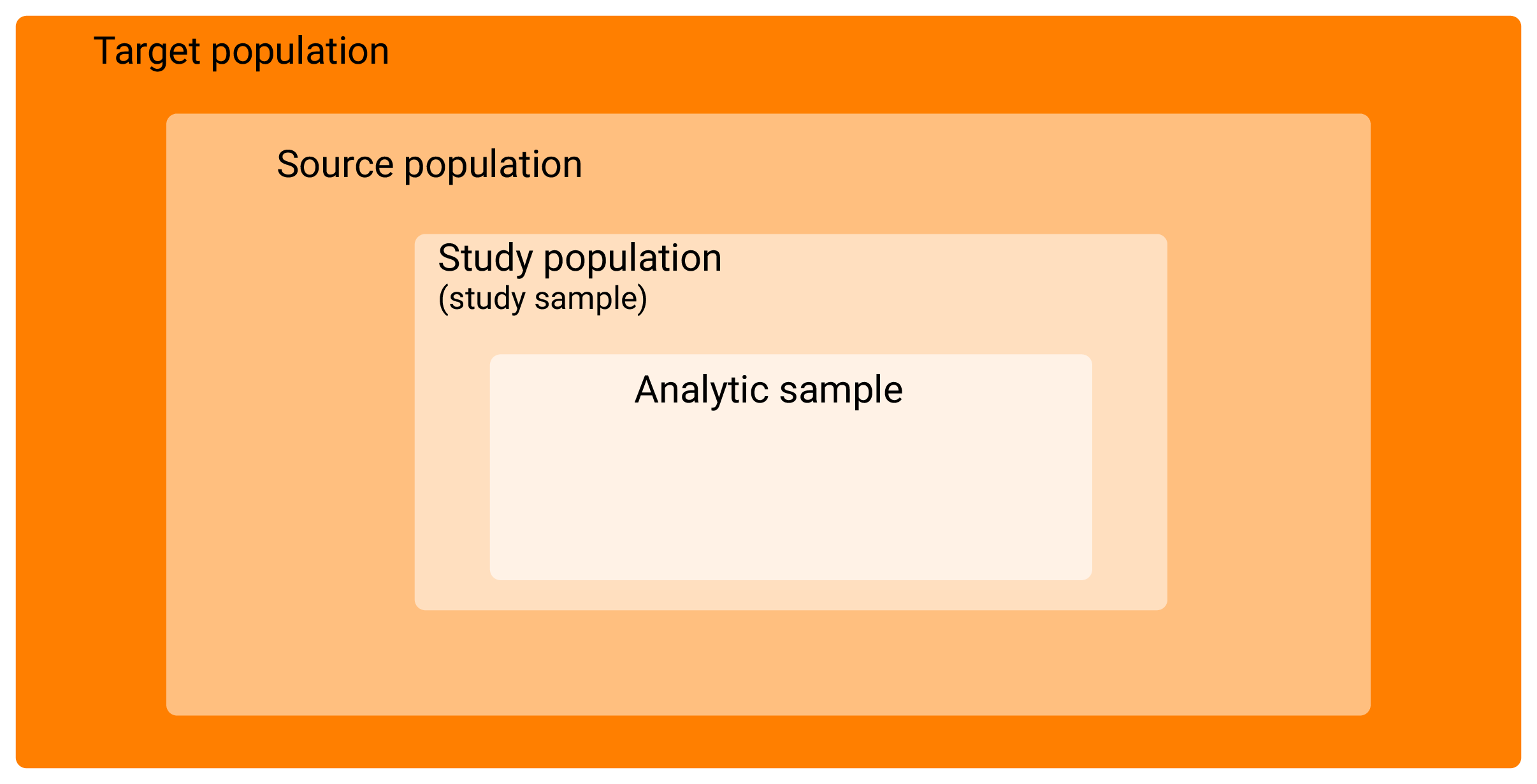Statistical light bulb
On this page I present my unstructured thoughts about statistics and epidemiology from time to time.
Finding evidence in the context of uncertainty is challenging.
Population and sample (July 4, 2022)Collinearity and confounding bias (February 11, 2022)
Role of variables in epidemiological studies (February 7, 2022)
Number converter between risks, incidences, percentages and decimals. (February 4, 2022)
Surprisal S-value: let's toss a coin to understand the value of a p-value (February 4, 2022)
Avoid categorization of a continuous variable (February 15, 2018)
Confusion caused by the p-value (November 17,2017)
Principles of statistical analysis (November 15, 2017)
Population and sample
February 11, 2022Note: I refer here to the study designs and analyses of human studies in the field of epidemiology.
A population is a group of people. A population usually includes too many individuals to be appropriately studied, so a study refers to one or more samples drawn from it.
The specification of the population about which inferences are to be made should be well-defined (person, place and time). This population is called the target population.
The source population is a subset of a target population available for study from which a sample is drawn.
The study population is a term for a sample drawn from a source population. For example, this is a group of people who have been invited, agreed to participate, and meet the inclusion criteria.
Not all variables are measured without errors or missing values. Thus, some assumptions are made and individuals may be excluded from the analysis. Thus, the sample used for analysis may be different from the sample drawn (study population). Thus, the analytic sample is a term for an (appropriate) subset of the study population in which the analysis is conducted.
